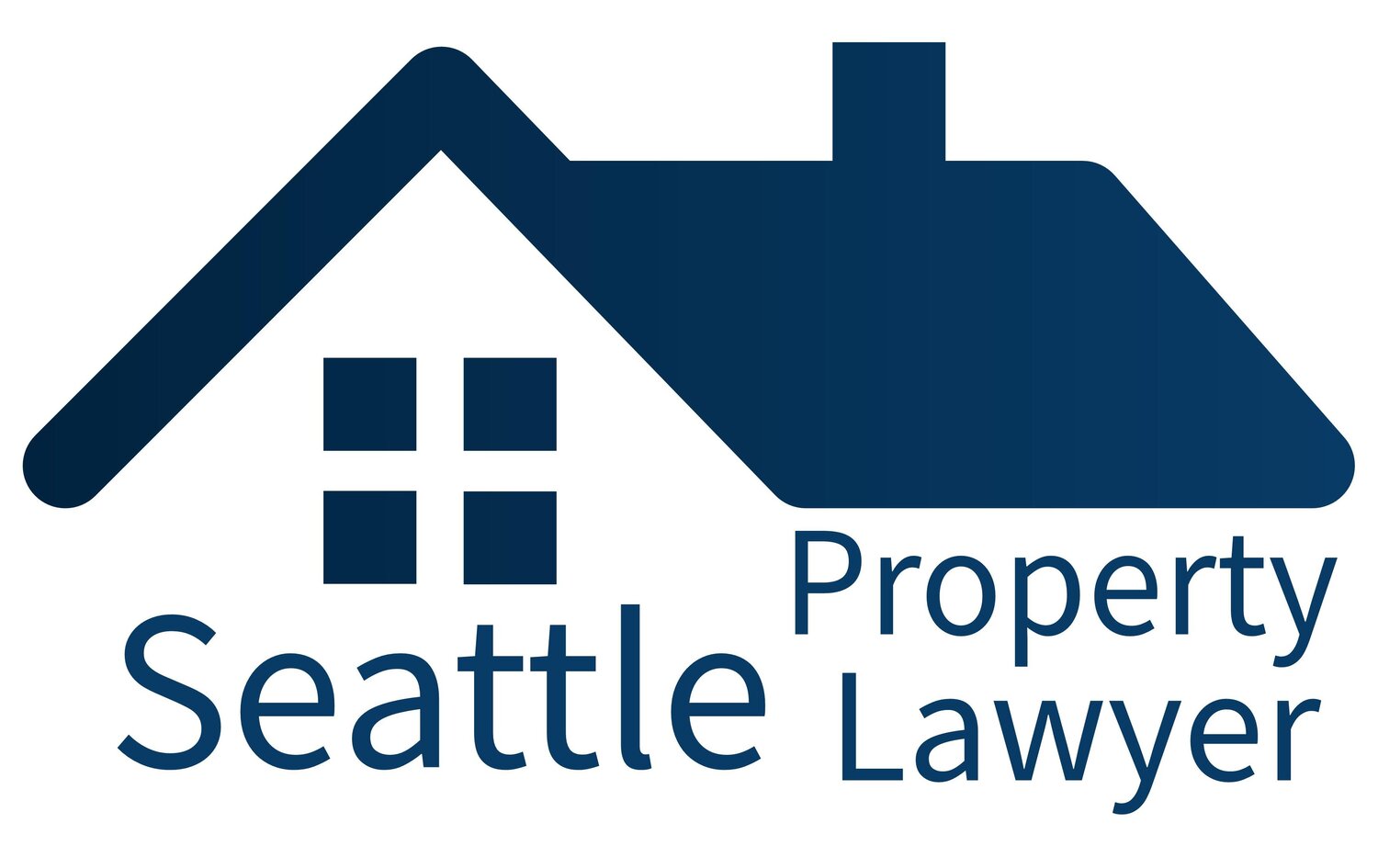Form 17 Explained
/Standard Disclaimer: Like all information on the internet, rely on the following information at your own risk.
By law, most sellers of real property must provide a completed Seller Disclosure Statement (aka Form 17) to any buyer. The Northwest Multiple Listing Service (NWMLS) publishes the most commonly-used real estate forms, and its version is called the NWMLS Form 17. But other forms work fine too, including the Seller Disclosure Statement created and used by Craig and other lawyers. Regardless of which version you use (they are all essentially identical) most people have a lot of questions. Here are, hopefully, some answers.
The law requires a Seller Disclosure Statement.
This legal obligation is created by statute. It is a detailed law that sets out the specific terms of a required disclosure to buyers of commercial, residential, and unimproved property. Because the law itself spells out exactly the terms of the disclosure, any form that tracks the statute will work just fine.
The statute itself doesn’t provide much guidance about exactly how a seller should complete this form. But it does provide a lot of other good information that should not be ignored. And other law (case law, which is law created by courts) puts the obligation in context and gives further guidance.
Seller Disclosure Statement
How should a seller complete the Form 17?
The law requires a seller to complete the Seller Disclosure Statement truthfully and to the best of their ability. However, answers are based only on a seller’s actual and current knowledge. A seller does not have to research any of these questions before answering them.
Failing to answer a question correctly can give rise to a claim against the seller after closing. Answering honestly reduces that risk. It is better to sell the house you have for a fair price and be done with it, rather than the house you wish you had for more, only to then be sued after the fact.
One common source of confusion is the difference between “no” and “don’t know.” Generally speaking, if you know something that indicates an answer is “no” then the answer is “no.” If you have no information one way or another, then the answer is “don’t know.” Easy enough, right?
It gets complicated where the absence of any information means the answer is probably “no.” For example, Question 2(A)(3) asks if there are any problems with the household water. If you have lived in the home, you probably should know of any problems if they exist. So if you don’t know of any problems, “no” would likely be the best answer. Remember, these questions are to the best of your knowledge.
Recognize the balance you want to strike between reducing your exposure, and putting off a potential buyer. Many sellers think “don’t know” is the safest answer. But if your disclosure is mostly “don’t know”s and you’ve lived there for years, some -- most? -- buyers may wonder what you are concealing. Remember, if you are honest in completing this form in the first place, your exposure is minimal.
Finally, buyers don’t expect a property in perfect condition. Noted defects, flaws, etc. won’t turn them off. However, if there is a defect noted, they will want to know more. So don’t be shy about explaining your answers (remember that those questions with an asterisk require an explanation if the answer is “yes”). Don’t go into any more detail than necessary, though, to (a) disclose the defect, and (b) put it in context.
What if a seller gives a wrong answer in the Seller Disclosure Statement?
An undisclosed defect can end up being an extremely expensive problem. It is reasonable for a buyer to wonder whether the seller just “dumped” the problem into the buyer’s lap by failing to disclose it on the Form 17 — and what can be done about it if so.
First and foremost, remember that the law requires sellers to answer to the best of their ability and existing knowledge. So a “wrong answer” isn’t an answer that turns out to be factually wrong. If the seller didn’t know, then the seller had no duty to disclose. Rather, a “wrong answer” is where a seller gave the wrong answer — and knew it.
When that happens, a buyer may have a claim for misrepresentation against the seller. The burden of proof is high, and it is a difficult claim to prove. But if the money at stake is significant (a failing foundation — a common source of such claims — can be a $100k problem) then it can make sense to incur legal fees in pursuing it.
Generally speaking, a problem that will cost more than $20k to fix merits at least consulting an attorney. Before incurring that cost, though, ask yourself: How do you know that the seller knew the answer was wrong? Can you bring that evidence into court? In other words, can you prove the claim?
If so, then it makes sense to at least give an attorney a call to discuss further.
Should the PSA list the Form 17 as included?
No. OK, technically it differs on whether you are the buyer, or the seller. If you’re the seller, then the answer is, “Absolutely not.” You’re the buyer? Then, “Uh, sure!”
It is very, very common for the Purchase and Sale Agreement (PSA) to list the Seller Disclosure Statement as being included in the contract as an addendum. This is a widely accepted standard practice among real estate brokers. However, this is actually inappropriate.
First and foremost, look at the terms of the Form 17 itself (which come directly from the statute): “THIS INFORMATION IS FOR DISCLOSURE ONLY AND IS NOT INTENDED TO BE A PART OF ANY WRITTEN AGREEMENT BETWEEN BUYER AND SELLER.” So right there, it makes no sense to list the Form 17 as an addendum to the PSA.
Moreover, it is not in the seller’s interest to do so. There is a reason why the law notes that this is for disclosure only and not part of the contract. That is because, when included in the contract, it significantly increases the seller’s legal exposure to an additional claim about the condition of the property after closing.
Misrepresentation bad, breach of contract worse
There are two legal ways for a seller to be liable to a buyer after closing: breach of contract, or misrepresentation (which can be either intentional or negligent misrepresentation, both are types of tort). In terms of the physical condition of the property, the law requires a seller to truthfully and accurately answer the questions of the Seller Disclosure Statement. If the seller doesn’t do that, then the seller will be subject to a claim of misrepresentation. And only such a claim, there is no basis to assert a breach of contract.
Unless, of course, the Form 17 has been listed by the parties as being one of the addenda to the contract. In that case, the buyer has a decent argument that the seller’s failure to answer the Form 17 correctly is also a breach of the PSA contract. This is a big deal. Such a claim dramatically increases the seller’s potential liability to the buyer. Not only are breach of contract claims easier to prove, they also give rise to a claim for attorney’s fees.
Ultimately, the terms of the statute and the form itself are likely to prevail: The Form 17 isn’t part of the contract. But any seller that willingly opens a very big door leading in the opposite direction… well, that’s a bad move. Buyers, needless to say, you might just want to roll with this one.



